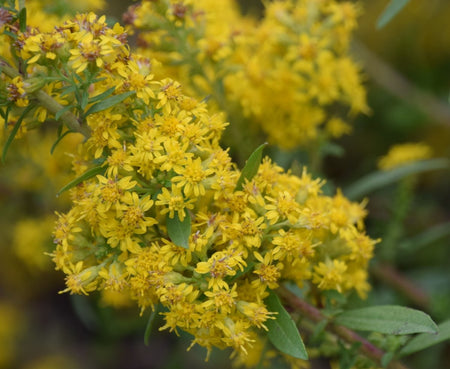When to expect emergence from your native plants each year


Each spring brings delight in the discovery of new growth emerging from the perennial plants you planted in prior years. Native plants, for the most part, are perennials which means they return each year. After they have gone to seed, they die back and their roots lay dormant under the soil. Some species are biennials and annuals that may give the appearance of returning each year, only because they disperse seeds that grow into new plants. Some native plants, like the red cardinal flower and blue lobelias, produce smaller off-shoot plants from the original plant. What reemerges instead is called basal rosettes.
At Garden for Wildlife™, our plant collections emerge and bloom at different times to ensure wildlife get the food they need throughout a minimum of three seasons. This means each of the species you plant will also have new growth at different times the following year.
Keep in mind that soil temperature is a key factor in emergence timing. If your area has experienced a particularly long cold winter and below freezing temperatures which have not allowed the soil to reach a consistent 40-50 degrees Fahrenheit, these emergence times could be delayed a few weeks. Alternatively, if your area is unseasonably mild in winter months, plants can emerge earlier and blooms fade out more quickly. Plants in containers, near warm brick or concrete that retain heat, can also support earlier emergence.
Once established, native plants are hardy, and leaf growth of early spring bloomers can emerge prior to the typical last frost dates. You may notice some frost burn on those early greens, but rest assured that the established root system underground is protected and getting ready to fuel new growth that comes as temperatures rise.
In the image above we've noted typical emergence dates of the plants in our 2021-2022 Garden for Wildlife Native Plant Collections™. This information is based on average historical patterns across states in zones 5-7, where average final frost dates occur at some point between April and May 1st.
Please note that timing of leaf and new growth emergence is not the same as bloom timing. The bloom dates for each of our plants are noted on the plant tags that come with the plants, as well as on our website on each collection page under the section "Meet the Plants".


Find Native Plants by Zip Code
We took the guesswork out of planting native. Check your zip to see what ships!

